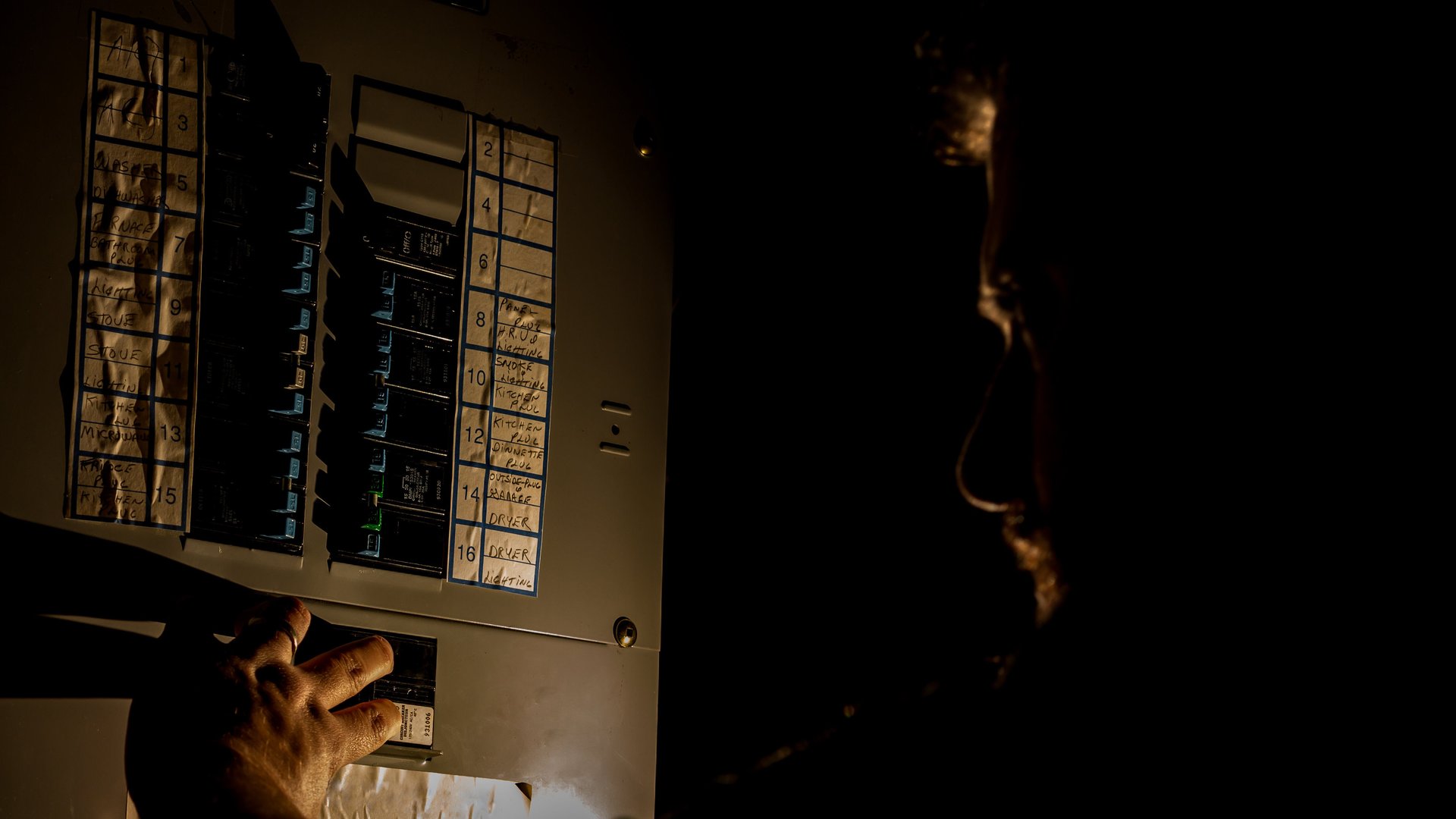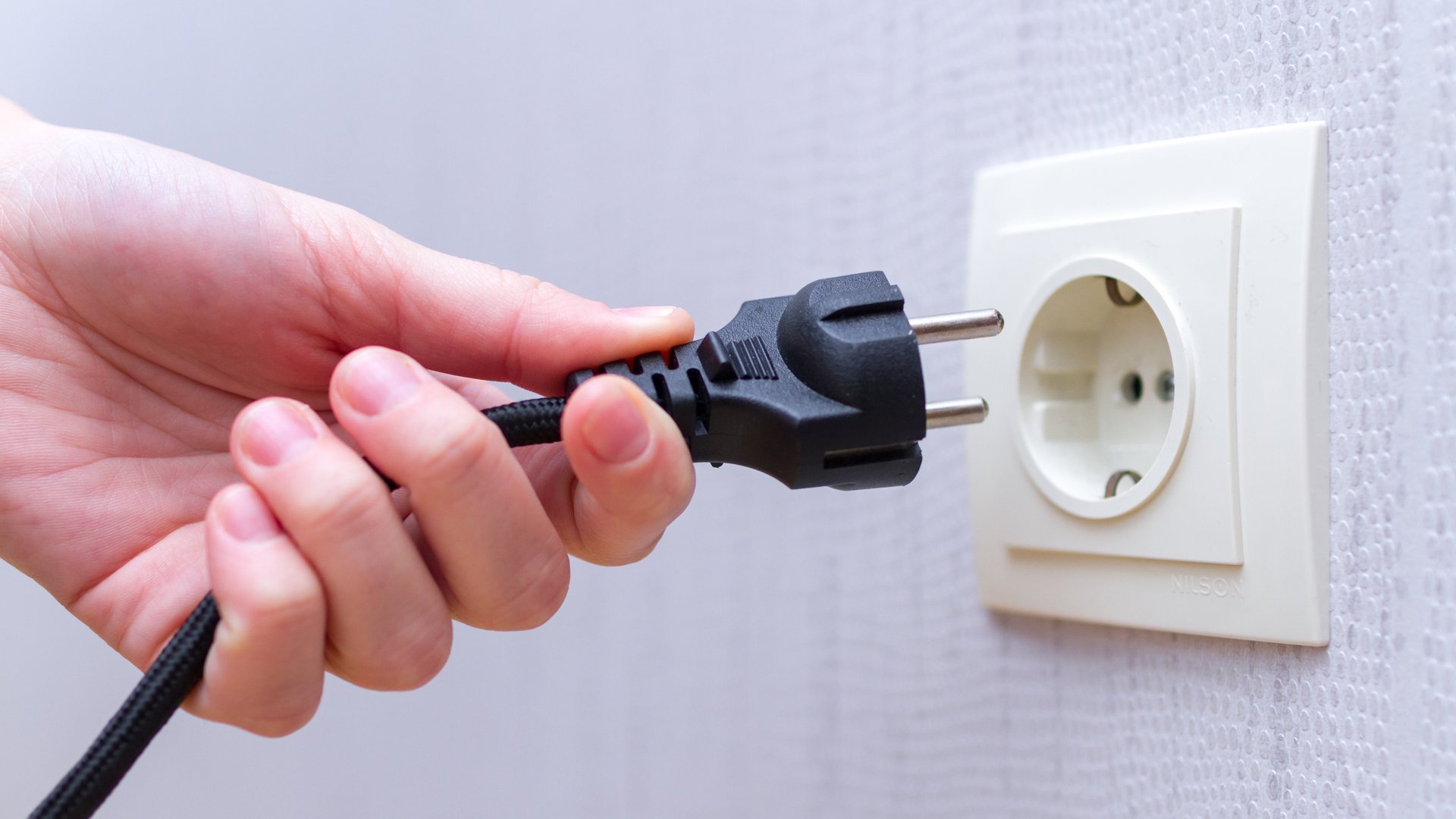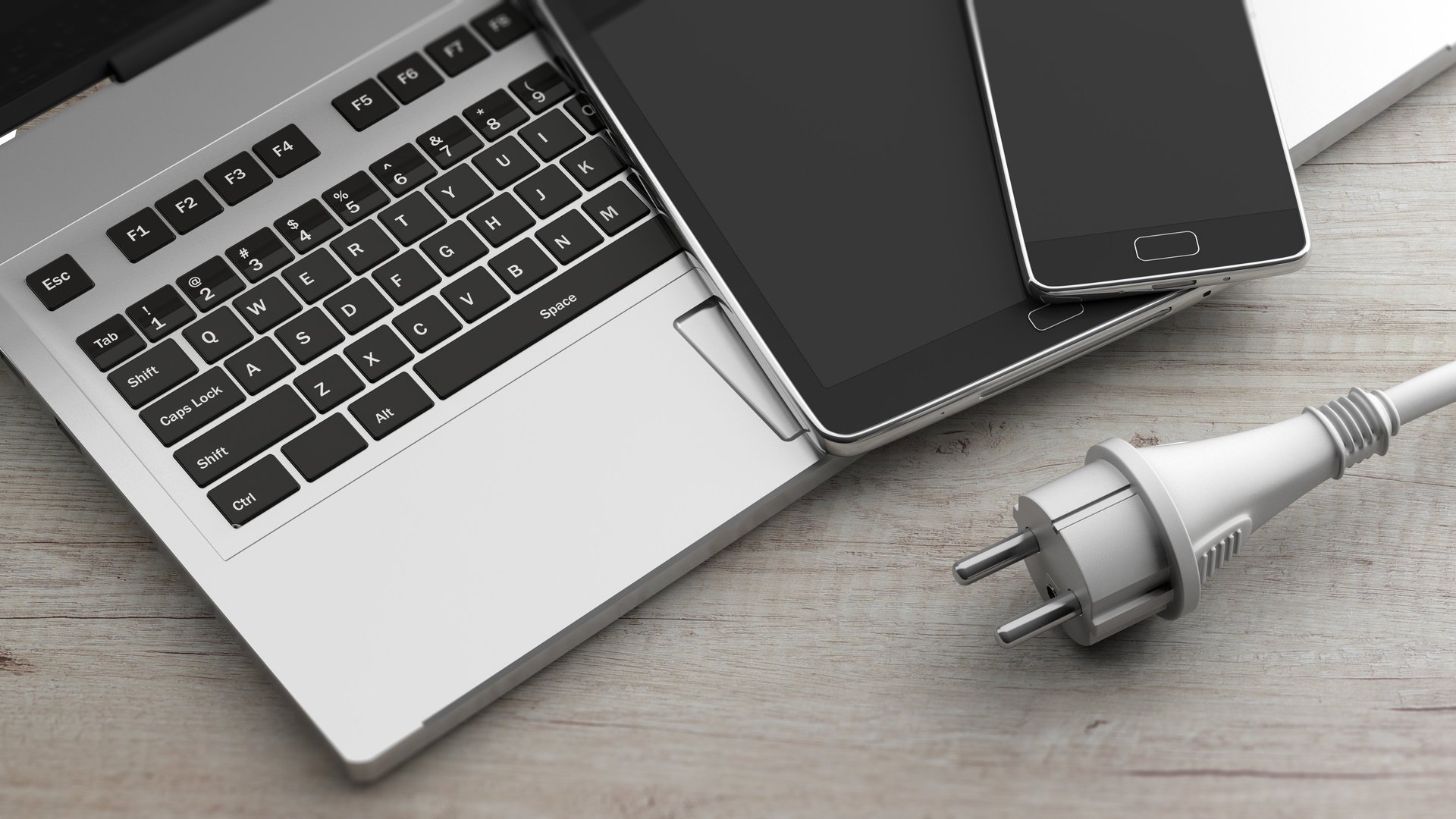How to Keep the Fun (And Work, Ugh) Going During a Power Outage
In today’s world, a power outage is like a death knell for your sanity. Many of us are working from home for the foreseeable future, and even those who decided being a couch potato is a more noble living, what are you going to do when the power goes out? Nothing—everything’s closed! That’s why we’ll prepare ahead of time.

In today’s world, a power outage is like a death knell for your sanity. Many of us are working from home for the foreseeable future, and even those who decided being a couch potato is a more noble living, what are you going to do when the power goes out? Nothing—everything’s closed! That’s why we’ll prepare ahead of time.
Suggested Reading
Picture this: You’re sitting in your jammies watching Martha Stewart and Snoop Dogg get their groove on, when all of a sudden ... BANG! That thunder crash that sounded like a nuke nearly killed you, and you were too stoned to remember to charge your devices. Oh, there are also boring safety and productivity considerations to worry about. Thankfully, you can kill both birds with one stone, and we’ll show you how in this power outage preparedness seminar.
Related Content
Word of warning: This can be a costly endeavor, and you might end up looking like the crazy doomsayer that stays in the outhouse up the road from a deserted Route 66. Preppers will feel right at home, while the rest of you may want to acquire some of the recommended items slowly over time.
First, we need power.

First and foremost, power is the most important part to figure out. From keeping smartphone communications alive to saving a batch of meat from spoiling, proper preparation for a lengthy outage will keep your home (and you) from falling apart. Your pickings for emergency power are plentiful, but one size doesn’t fit all.
Keep the Fridge, Freezer, and Other Essentials Running
If you’re expecting an outage that stretches longer than a couple of hours, you’ll need some sort of generator. Whether gas or solar, a generator will convert that energy into usable AC power.
How much you need will depend on what you’re doing. That’s an easy equation if you know where to find the numbers. Just add up the total wattage of all the electronics you’re looking to cover. Look for a sticker on the item or inside the manual. If all else fails, search your make and model online. Then, we’ll try to overshoot that figure by a decent margin. That’s the capacity we’re looking for in our perfect generator.
It’s impossible to cover every scenario here, but let’s say you have a refrigerator, a deep freezer, and let’s throw a microwave oven in there, because no one wants to eat cold spaghetti. The typical sum of all that comes out to about 2,500 watts, so you’d want something with at least 3,000 watts or higher (I’d start higher), reason being that generators don’t always run at 100% efficiency. The more stuff you have, the more power you need.
Don’t forget that you’ll need to cover both startup (surge watts) and running power (rated watts) needs for any electronics you’re hooking up. Not all your appliances will have a startup requirement, but a lot of the important ones do—like refrigerators and air conditioning units—and you won’t be able to start them without the right numbers. Reference your appliances’ manuals or power stickers and cross-check them with the generator you decide on.
Going back to our make believe outage crisis, something like this 4,400W DuroStar generator would be perfect in that scenario. It’s a gas-powered unit (propane models use cleaner energy, but they’re more expensive), and niceties include an electric starter, two direct 12V 20A outlets, a 120V/240V 30A twist lock, and a 12V 10A utility outlet. Its 3.9-gallon fuel tank keeps the lights on for eight hours at 50% load, which is right where you want to be for efficiency.
If you can’t get your hands on the flammable substances needed for those, you could also go solar, though these don’t offer quite as much power output. If you’re going solar, Jackery is a safe brand to start with. Its 500W portable generator packs an AC hookup and three USB ports, and the battery charges in 16 hours under the sun (or eight hours hooked up to a wall, but that’s not nearly as cool). The downside is you have to buy the solar panels separately, and like the generators, they cost a pretty penny.
A power inverter for your car is another neat option to consider. It draws energy from your car’s internal battery and converts it to usable AC energy. These Krieger units are fantastic in a pinch, with two each of built-in USB ports and three-pronged outlets. Find them as cheap as $85 for 1,100W/2,200W running/surge, with some going as high as 4,000W/8,000W for $350. The only downside is you’ll need to recharge that car’s battery.
One last quick consideration for home owners with expendable income: Standby generators. You install them on the side of your house, and they’ll kick in automatically whenever your power goes out. The upshot is that they’re stable, efficient, and pack enough juice to power much of an entire average home, but expect to pay anywhere from $3,000-$4,000 for a basic setup, plus more for potential installation and permit fees.
Save Your Work

After the essentials, you want to preserve that spreadsheet you spent hours working on. (Hey, not everyone works in the cloud!) An uninterruptible power supply (UPS) or battery backup is what you want. These are like surge protectors, but they also have built-in batteries that stay charged and will keep anything plugged into the backup sockets alive, at least for a little while.
These aren’t meant to replace generators—in fact, most will die after just a few minutes—but they’re perfect for a home office. Plug your PC, monitor, and internet modems and routers into the battery ports, and you’ll have enough time to sound the alarm to your coworkers, save your docs, and brace for a long technological winter.
A basic one like APC’s 550VA/300W, eight-outlet box works well and doesn’t break the bank. Three of its outlets have battery protection—just enough for the office essentials.
Spend more, and you can get something nicer like this 1,500VA/1,000W CyberPower tower that looks more like a small PC. It’s pricey at $210, but you get both USB-A and USB-C ports, ethernet, a display with button controls for configuration, plus 12 total outlets, six of which will survive a sudden blackout for up to ten minutes.
Phones, Tablets, and Laptops, Oh My

Yes, we want to power those, too. They’re ideal to have in this situation, not only because you may need to contact someone in an emergency but also to handle the actual emergency here, and that’s your creeping boredom. Get a portable power bank and keep it charged.
Anker’s PowerCore batteries are among tops in the game, and although a tad pricey, this high-tier PowerCore+ model addresses many pain points. With 26,800mAh capacity, it can charge most smartphones half a dozen times, an iPad twice and change, and even has room for multiple top-ups for a Nintendo Switch. It has a 45W USB-C Power Delivery port and two USB-A PowerIQ ports, giving you enough headroom in both capacity and current to charge even a laptop at non-turtle speeds. It also only takes just under four hours to charge, which is amazing for something this size.
Anker has a similar model that’s around $40 cheaper and includes a USB-C wall charger and USB-C to USB-C cable, but your total charging current falls to 30W.
RAVPower is another great brand for power banks. At $57, this 26,800mAh pack is considerably more affordable while offering similar performance with a 30W maximum and Power Delivery. With two USB-A ports and one USB-C, it can handle up to three devices at a time, and RAVPower’s iSmart 2.0 tech will ensure each device gets the exact tender, loving care it needs.
One last consideration if you’re anything like me and the skill of premeditated charging eludes you: a solar charger. This should be your last ditch option in almost any scenario, as solar chargers can’t guarantee consistent efficiency like a standard charger can.
If the sun isn’t playing hooky, however, you can enjoy up to 63W of total power spread across connection options you’ve probably never even heard of, including dual 2.4A USB-A ports, a 3A USB-C port, and 19V/3A DC out. That last option is perfect for charging portable generators like the Jackery above, and the box includes an all-in-one cable to facilitate that.
Chargers like this one require you to keep whatever you’re charging out in the sun. You might get along better with a battery model, as you could just toss it outside and keep your phone with you until it’s ready to go. This one has 25,000mAh capacity, USB-C, wireless charging, and an onboard flashlight, and it’s only $36.
While we’re on the subject of batteries, pick up a 100-pack of alkaline batteries, too. You know … for the toys. (NSFW!)
Safety
You may have power, but you’re not out of the woods yet. What happens if the power is out longer than your fridge can keep things cold? How are you going to patch little Jimmy up when he meets face-to-face with the wall he can’t see? And WHO WILL CALL JA RULE TO MAKE SENSE OF ALL THIS!?
OK, that last one isn’t a priority, but we can prepare for everything else. It’s imperative to have a flashlight handy, like this cool 750-lumen Black & Decker that you hold like a gun. Prefer the undertaker-in-graveyard look? Try out these LED lanterns. You can also snag some battery-powered LED bulbs for more permanence. The classic candle is an option if you’re moody, too. Just take proper precautions.
A first-aid kit in constant reach is always ideal, power outage or not. So is a hand-crank radio, which you can use to listen for the all clear during intense storms or emergency situations.
Oh, and you’re probably going to get hangry and fix up a quick sandwich, but you better steer clear of that spicy honey-roasted deli turkey if your fridge has been off well over a few hours. Pick up a large heavy duty cooler and throw some ice in to keep your meats and other sensitive food items from spoiling.
Time to have fun!

We’re almost there! We’ve taken care of the grown up stuff, and now it’s time to sort out how you’ll survive the next few hours without your Xbox.
If internet is integral to your daily jam, you’ll want hotspot access. Most smartphones have this feature built-in, and your mobile plan may already include hotspot access. If yours doesn’t, you can buy a dedicated one and throw a SIM card in, which helps you preserve enough battery to swipe left on Tinder at bedtime, a fine alternative to counting sheep.
I’d recommend Verizon, who boasts the best overall coverage with very stable LTE speeds. The Jetpack MiFi 8800L is capable for the task at $200, or $100 if you opt for a two-year contract. If you need new service, Verizon’s unlimited single-line data plans start at $80 per line in data-only mode, and that also includes talk and text if you decide to add a phone later. You can also get data-only plans starting at $60 for 10GB, but you’ll pay $10 per gigabyte if you run over. Already with Verizon? Add a data-only line to your plan for 50% off usual costs.
Just be careful not to chew through your data like a madman. From experience, you should be fine to browse the web, play video games online, and maybe even stream a few episodes of your favorite Netflix show on lower quality without using over 2-3 gigabytes.
If you’re watching HD or higher, downloading anything, or using more data intensive features like video calls, you’ll need more. Get an unlimited data plan through your carrier if possible, otherwise you’ll be staring down a phone bill that one could easily mistake for a past due mortgage. Make sure your carrier supports 4G speeds in your area, because anything less is pretty much useless.
This last round of purchases is only necessary if you actually like the people living in your household. Board games! Or card games. Any kind of game that doesn’t require power, really. In my house, we love Spades, which you can play with regular ol’ playing cards. We also like Dominos, or “bones,” if you will.
There are also classic staples like Uno, Monopoly, and an unusually dangerous and wild game of Twister. (If you have some shot glasses and a gang of adventurous yoga practitioners—even better!)
You can’t go wrong here. Just figure out what you and your family like and buy it. At worst, it’ll suffocate in the back of a stuffy closet until its glorious day of redemption.
Congratulations: You’ve just (theoretically) survived a power outage, and potentially a zombie outbreak!
